BUILDING A BRAND BY THE COMPANY YOU KEEP
PRESS PLAY>> TO VIEW THIS MONTH’S WELCOME MESSAGE FROM KEN
 Walking through the crowded aisles at the brand new Earth Fare store that just opened near me last week, I was impressed first by the amount of customers and then by the selection of organic and home grown products that were offered. It reminded me of my first trip to Trader Joe’s several years ago on the west coast or more recently to my initial visit to a Whole Foods in Detroit a few years ago, interesting, exciting, a sense of discovery. Not that we’ll shift our food shopping from our favorite Publix store, but this new store was a refreshing change in the shopping experience. Even though the store’s outdoor sign said it was established in 1975, the concept is new and refreshing and it capitalizes on the major trend in consumer preferences for natural and organic products in an innovative environment.
Walking through the crowded aisles at the brand new Earth Fare store that just opened near me last week, I was impressed first by the amount of customers and then by the selection of organic and home grown products that were offered. It reminded me of my first trip to Trader Joe’s several years ago on the west coast or more recently to my initial visit to a Whole Foods in Detroit a few years ago, interesting, exciting, a sense of discovery. Not that we’ll shift our food shopping from our favorite Publix store, but this new store was a refreshing change in the shopping experience. Even though the store’s outdoor sign said it was established in 1975, the concept is new and refreshing and it capitalizes on the major trend in consumer preferences for natural and organic products in an innovative environment.
I was particularly impressed by the number of branded products lining the shelves and the coolers that I had never heard of before. Food stores have long been the home to Consumer Packaged Goods that have dominated the marketing media in the battle for market share. However, here the selection was based more on innovation and niche product benefits that the customer will seek out once they have loyalty to the store brand and what it stands for. In my branding articles and books, I always stress the need for communicate the products unique value and benefits in order to create a successful brand. However, sometimes you can’t afford the expense necessary to build awareness or be able to communicate your unique selling proposition. That’s when it becomes important to seek an established brand to help your brand by association.
Just as soft drink companies sign long term contracts with fast food restaurants to build their brands, lesser known brands seek preferred status in distribution. Certain wineries seek to be on the wine lists and popular restaurants to build awareness and preference. Electronics companies, like Infinity, supply the multi-media equipment in popular auto models. Bedding companies tie in with major hotel chains to add value to their brand as well as the hotel owner’s. In my drug store days, we sought out the support of Good Housekeeping to put its seal on our private label products to add credibility and value. JetBlue enhanced its service reputation by adding Dunkin Donuts brewed coffee on all their flights. Nike built its brand by sponsoring major sports teams and golfers to insure that their swoosh logo was visible with an implied endorsement.
This is what’s happening in Earth Fare where hundreds of homeopathic drugs and supplements line the shelves with the only sales pitch being “try this because we sell it here. So it must work.” We are reliant on the store to substantiate our choice of certain products. If this brand, that I believe and trust, sells it, then it must be good.
As the brands grow and develop a loyal customer base, the complementary benefits work both ways and the brands continue to grow successfully together.

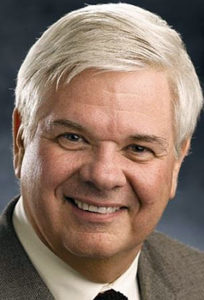 When I started this blog some 12 years ago, my goal was to replicate the many Monday morning quarterback sessions by phone with a select number of my peers in the retail, ad agency, and supplier worlds. Once the Monday am executive meetings were finished, there was always time for a call or two to get their insights on what was happening in our industry. We would talk about a new everyday pricing strategy at Sears, an acquisition by Saks, quarterly results for Walgreens, or what were they thinking with that spot on Super Bowl?
When I started this blog some 12 years ago, my goal was to replicate the many Monday morning quarterback sessions by phone with a select number of my peers in the retail, ad agency, and supplier worlds. Once the Monday am executive meetings were finished, there was always time for a call or two to get their insights on what was happening in our industry. We would talk about a new everyday pricing strategy at Sears, an acquisition by Saks, quarterly results for Walgreens, or what were they thinking with that spot on Super Bowl? I wondered how do small vintners succeed in gaining shelf space and share of market. I asked Wayne Fieldsa, a small, family-owned Sonoma vineyard owner, who stopped bottling his own wine a few years ago and now supplies grapes to other winemakers, what it takes to succeed in today’s wine market. He conceded that the large companies will continue to grow and acquire small wineries that have developed successful brands just as the major breweries have taken over many craft brewers around the country. However, he said that there still is plenty of room for wines that create a niche for themselves and a brand that is distinguishable. For example, he specialized in Syrah grapes and produced some award-winning varietals that helped gain
I wondered how do small vintners succeed in gaining shelf space and share of market. I asked Wayne Fieldsa, a small, family-owned Sonoma vineyard owner, who stopped bottling his own wine a few years ago and now supplies grapes to other winemakers, what it takes to succeed in today’s wine market. He conceded that the large companies will continue to grow and acquire small wineries that have developed successful brands just as the major breweries have taken over many craft brewers around the country. However, he said that there still is plenty of room for wines that create a niche for themselves and a brand that is distinguishable. For example, he specialized in Syrah grapes and produced some award-winning varietals that helped gain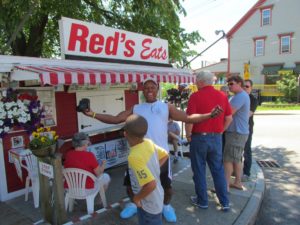 Finally, there are plenty of places to get lobster rolls in Maine and all of them are pretty good, but Red’s Eats in Wiscasset on the Back River not far from Bath, ME, has created a brand that brings customers by the hundreds to stand in line for their lobster rolls (a pound of meat in every roll is the brand promise) and fried clams, served out of a small, food trailer right on US1 and the bridge over the river. Across the street is a lovely restaurant with A/C and windows facing the river. On a Sunday, there’s no wait for a table, but across the street the crowd at Red’s is testimony to a brand that brings them in from all over and bring them back again for more. The list can go on and I’m sure you have some small brands that have big-time loyalty near you. It’s all proof that the important factor in a successful brand is to determine a customer need that other similar products or services don’t provide or provide as well, and then communicate that value in an honest, consistent manner in everything you do.
Finally, there are plenty of places to get lobster rolls in Maine and all of them are pretty good, but Red’s Eats in Wiscasset on the Back River not far from Bath, ME, has created a brand that brings customers by the hundreds to stand in line for their lobster rolls (a pound of meat in every roll is the brand promise) and fried clams, served out of a small, food trailer right on US1 and the bridge over the river. Across the street is a lovely restaurant with A/C and windows facing the river. On a Sunday, there’s no wait for a table, but across the street the crowd at Red’s is testimony to a brand that brings them in from all over and bring them back again for more. The list can go on and I’m sure you have some small brands that have big-time loyalty near you. It’s all proof that the important factor in a successful brand is to determine a customer need that other similar products or services don’t provide or provide as well, and then communicate that value in an honest, consistent manner in everything you do.

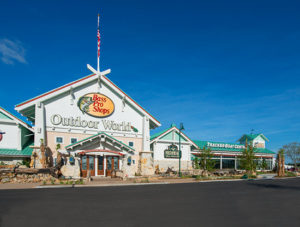 Before writing this article, I visited the newest Bass Pro Shop location in the Tampa Bay area and it was obvious why Sports Authority was fading fast. The Bass Pro shop was an exciting experience. Huge displays, interesting experiences, valuable in-store events. Then there is the selection from more fishing rods than I have ever seen to more cammo gear than in a military post. From boats to ACV’s and with a restaurant that’s worth making the trip just for the menu, Bass Pro gets it. And it’s always supported by an effective, on-target marketing campaign. Across the road was a new Dick’s Sporting goods and while not as over-powering as Bass Pro, it was everything that Sports Authority should have been but wasn’t even close. And Dick’s marketing is as good as Gatorade or Under Armor in creating a relevant, adifferentiated brand of stores.
Before writing this article, I visited the newest Bass Pro Shop location in the Tampa Bay area and it was obvious why Sports Authority was fading fast. The Bass Pro shop was an exciting experience. Huge displays, interesting experiences, valuable in-store events. Then there is the selection from more fishing rods than I have ever seen to more cammo gear than in a military post. From boats to ACV’s and with a restaurant that’s worth making the trip just for the menu, Bass Pro gets it. And it’s always supported by an effective, on-target marketing campaign. Across the road was a new Dick’s Sporting goods and while not as over-powering as Bass Pro, it was everything that Sports Authority should have been but wasn’t even close. And Dick’s marketing is as good as Gatorade or Under Armor in creating a relevant, adifferentiated brand of stores. A few years ago, while spending some of my career on the advertising agency side of the business, I had the pleasure of working with the marketing people at Beall’s Department Stores in Bradenton, FL. The company had been in business for several years and had become of favorite shopping place for “mature” customers in Florida and Arizona by understanding who they were NOT trying to be. Beall’s (pronounced Bells) was not trying to be Macy’s, nor Kohl’s, nor JCPenney, nor Ross, nor TJMaxx. For that matter they weren’t trying to be just like any other stores competing with them in their select markets. The company understood the casual lifestyle of its customers. They understood that they were looking for a lower prices. They wanted quality brand names. They were no slaves to fashion. And they wanted a pleasant shopping experience at the store.
A few years ago, while spending some of my career on the advertising agency side of the business, I had the pleasure of working with the marketing people at Beall’s Department Stores in Bradenton, FL. The company had been in business for several years and had become of favorite shopping place for “mature” customers in Florida and Arizona by understanding who they were NOT trying to be. Beall’s (pronounced Bells) was not trying to be Macy’s, nor Kohl’s, nor JCPenney, nor Ross, nor TJMaxx. For that matter they weren’t trying to be just like any other stores competing with them in their select markets. The company understood the casual lifestyle of its customers. They understood that they were looking for a lower prices. They wanted quality brand names. They were no slaves to fashion. And they wanted a pleasant shopping experience at the store.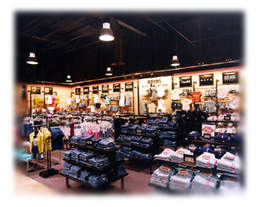 the registers were line up down the aisles with shoppers taking advantage of pretty much the same promotional offers that Beall’s offers regularly to its customers. The store was well organized and contemporary, but frankly not much different than the store that was demolished just 6 months earlier when the mall was torn down in favor of a new town center concept. Beall’s was the first to open this week. The store wasn’t exciting, and that’s the point. Beall’s brand isn’t necessarily exciting. It just works for the customers that they have targeted in over 100 years of doing business. Consistent, clean, well-merchandised, effective graphics all living up to the brand promise. A solid mixture of national brands like Columbia, Gloria Vanderbilt, Skechers and Dockers mixes well with Beall’s own Reel Legends, Guy Harvey, and Carribbean Joe.
the registers were line up down the aisles with shoppers taking advantage of pretty much the same promotional offers that Beall’s offers regularly to its customers. The store was well organized and contemporary, but frankly not much different than the store that was demolished just 6 months earlier when the mall was torn down in favor of a new town center concept. Beall’s was the first to open this week. The store wasn’t exciting, and that’s the point. Beall’s brand isn’t necessarily exciting. It just works for the customers that they have targeted in over 100 years of doing business. Consistent, clean, well-merchandised, effective graphics all living up to the brand promise. A solid mixture of national brands like Columbia, Gloria Vanderbilt, Skechers and Dockers mixes well with Beall’s own Reel Legends, Guy Harvey, and Carribbean Joe.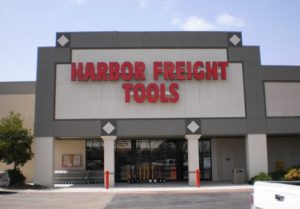 going to win any praises for design or emulation of graphics and displays. Just tools. Let’s take a look at one of my favorite stores—Harbor Freight (see
going to win any praises for design or emulation of graphics and displays. Just tools. Let’s take a look at one of my favorite stores—Harbor Freight (see  As we explored the various Christmas market festivals in each city, we were taken back into memories of how the holidays felt many years ago. We tried to figure out what made it so special and we came to the conclusion that Christmas in Europe is not just a holiday selling season, but it’s a time of celebration for the entire community and all of the businesses (not just the retailers) go all out to show their celebration of the holiday. No political correctness here. This is Christmas with Nativity scenes, Santa Clauses, angels, and all of the other symbols. But most obvious is the happy faces of the people—whether they were visiting the markets or whether they were working the various businesses. It was a festival atmosphere and yet it was calming (“All is calm…”) and heartwarming. Yes, many of the booths in the Christmas markets sell the same items as those in other cities. Yet, there is enough local flavor to give each one its own personality and style. Sure there were special prices, but it didn’t seem like prices and sales were the key focus. The displays—whether in a small, cold hut or in a centuries-old building were as exciting as any that I’ve seen on Fifth Avenue. The crowds were there on Wednesday morning just like they were most evenings and on the weekends where families, seniors, and youth mingled and enjoyed the atmosphere and the offerings. There were women in burkas, men wearing yarmulkes, priests, and even some tourists! Everyone enjoying the special time of year.
As we explored the various Christmas market festivals in each city, we were taken back into memories of how the holidays felt many years ago. We tried to figure out what made it so special and we came to the conclusion that Christmas in Europe is not just a holiday selling season, but it’s a time of celebration for the entire community and all of the businesses (not just the retailers) go all out to show their celebration of the holiday. No political correctness here. This is Christmas with Nativity scenes, Santa Clauses, angels, and all of the other symbols. But most obvious is the happy faces of the people—whether they were visiting the markets or whether they were working the various businesses. It was a festival atmosphere and yet it was calming (“All is calm…”) and heartwarming. Yes, many of the booths in the Christmas markets sell the same items as those in other cities. Yet, there is enough local flavor to give each one its own personality and style. Sure there were special prices, but it didn’t seem like prices and sales were the key focus. The displays—whether in a small, cold hut or in a centuries-old building were as exciting as any that I’ve seen on Fifth Avenue. The crowds were there on Wednesday morning just like they were most evenings and on the weekends where families, seniors, and youth mingled and enjoyed the atmosphere and the offerings. There were women in burkas, men wearing yarmulkes, priests, and even some tourists! Everyone enjoying the special time of year. constantly be refined while sticking to the reasons for the season that make it special. It’s not all about black Friday prices and one-day sales. It’s a celebration and a time for special memories. Standing in line in one of the many Kathe Wohlfahrt Christmas stores (you’ve got to experience one of these!) I had the same feeling that I had each Christmas when my mother would load me and my brothers on the Detroit streetcars to go to Hudson’s Downtown department store. This was not just a shopping trip. It was an excursion into the North Pole and Bethlehem and New York all wrapped up in one. An exciting, memorable time and shopping was just a sidelight to a tradition that I’ll always remember. That’s what the brand of Christmas is all about when it comes to retail. The marketing should reflect this attitude of a special time of year. The stores should dress themselves up more with experience and less on sale signs. The people serving you should be as excited as you are about the season and the experience. The community should continue to make living there extra special at this time and give people a reason to come out and share the experience.
constantly be refined while sticking to the reasons for the season that make it special. It’s not all about black Friday prices and one-day sales. It’s a celebration and a time for special memories. Standing in line in one of the many Kathe Wohlfahrt Christmas stores (you’ve got to experience one of these!) I had the same feeling that I had each Christmas when my mother would load me and my brothers on the Detroit streetcars to go to Hudson’s Downtown department store. This was not just a shopping trip. It was an excursion into the North Pole and Bethlehem and New York all wrapped up in one. An exciting, memorable time and shopping was just a sidelight to a tradition that I’ll always remember. That’s what the brand of Christmas is all about when it comes to retail. The marketing should reflect this attitude of a special time of year. The stores should dress themselves up more with experience and less on sale signs. The people serving you should be as excited as you are about the season and the experience. The community should continue to make living there extra special at this time and give people a reason to come out and share the experience. So, if you’re dreading the last few days of the Christmas rush, take a few minutes to think back what made this holiday so special when you were young. Think about the brand of Christmas and why this time of year is not only a time for revenues and promotions, but also a time for experiences and memories. If you’re one of the marketers trying to take advantage of the season, make it special for your customers by going the extra mile to make it a memorable experience. If you’re a customer, enjoy the experience and enjoy your families.
So, if you’re dreading the last few days of the Christmas rush, take a few minutes to think back what made this holiday so special when you were young. Think about the brand of Christmas and why this time of year is not only a time for revenues and promotions, but also a time for experiences and memories. If you’re one of the marketers trying to take advantage of the season, make it special for your customers by going the extra mile to make it a memorable experience. If you’re a customer, enjoy the experience and enjoy your families. As an article recently in the New York Times pointed out, Amazon is far outpacing its competitors by building a “retail” operation that nobody can effectively compete with, especially at this time of year. Amazon’s stock performance (double in value) this year has outpaced the rest of the market. The big reason is that after years of development and investment in technology and logistics, Amazon works! It struck me as I saw the ads for Macy’s “Believe” campaign which I still think captures the spirit that made department store the Christmas headquarters for shopping several years ago. I also watched the promotions for the Macy’s Thanksgiving Day parade that has been a tradition at our household for viewing for as long as I can remember. What struck me is that I hadn’t been in Macy’s—or any other department store– for at least a year and certainly hadn’t purchased anything at the stores for even longer. However, our family has made at least 50 purchases from Amazon (and Amazon Prime) this year. Everything from swimming pool pumps to water filters to books to videos to shoes to toys…and I could go on. And to top it all off, we had almost all of the items delivered at no cost, to our front door, the next day. And…at prices that beat most Black Friday deals this week.
As an article recently in the New York Times pointed out, Amazon is far outpacing its competitors by building a “retail” operation that nobody can effectively compete with, especially at this time of year. Amazon’s stock performance (double in value) this year has outpaced the rest of the market. The big reason is that after years of development and investment in technology and logistics, Amazon works! It struck me as I saw the ads for Macy’s “Believe” campaign which I still think captures the spirit that made department store the Christmas headquarters for shopping several years ago. I also watched the promotions for the Macy’s Thanksgiving Day parade that has been a tradition at our household for viewing for as long as I can remember. What struck me is that I hadn’t been in Macy’s—or any other department store– for at least a year and certainly hadn’t purchased anything at the stores for even longer. However, our family has made at least 50 purchases from Amazon (and Amazon Prime) this year. Everything from swimming pool pumps to water filters to books to videos to shoes to toys…and I could go on. And to top it all off, we had almost all of the items delivered at no cost, to our front door, the next day. And…at prices that beat most Black Friday deals this week. process developed a brand that resonates with so many customers today. That relationship is strengthened by the “personal” communication that out performs even the best of the traditional holiday gift stores. First, with a website that makes it so easy to find what you want, when you want, at a great price. Next with a CRM program called Amazon Prime that for an annual fee of $99 you can get free delivery, usually next day, with one click on your keyboard. You’ll get order status, shipping status, delivery status (even from the USPS), and a liberal return policy just in case you order the wrong size or color. Oh, and the return is just as easy to make. Want to watch a TV series that you missed on primetime? Prime video makes it easy to watch as simply as Netflix or Apple TV…and it’s usually free to download. Want to see if other people have purchased this product and were satisfied? Amazon’s customer rating system is comprehensive and validated so well it’s like calling a good friend who bought the product and is ready to recommend or suggest alternate items. I could go on, but these are just a few reasons why Prime now has over 40 million subscribers and growing every day (Black or not) before the holiday shopping season is over. Click on this linkview a great TV spot for Amazon Prime that really supports the brand.
process developed a brand that resonates with so many customers today. That relationship is strengthened by the “personal” communication that out performs even the best of the traditional holiday gift stores. First, with a website that makes it so easy to find what you want, when you want, at a great price. Next with a CRM program called Amazon Prime that for an annual fee of $99 you can get free delivery, usually next day, with one click on your keyboard. You’ll get order status, shipping status, delivery status (even from the USPS), and a liberal return policy just in case you order the wrong size or color. Oh, and the return is just as easy to make. Want to watch a TV series that you missed on primetime? Prime video makes it easy to watch as simply as Netflix or Apple TV…and it’s usually free to download. Want to see if other people have purchased this product and were satisfied? Amazon’s customer rating system is comprehensive and validated so well it’s like calling a good friend who bought the product and is ready to recommend or suggest alternate items. I could go on, but these are just a few reasons why Prime now has over 40 million subscribers and growing every day (Black or not) before the holiday shopping season is over. Click on this linkview a great TV spot for Amazon Prime that really supports the brand.  This is painfully obvious in the current situation at Volkswagen and Audi where the company purposefully altered the software to deceive the regulators of their emissions control testing. So the CEO of VW has resigned, but the lack of trust will linger with the customers long after he is forgotten. One of the key criteria in building a successful brand is the development of trust with the customer. In this case that their vehicles are not polluting the environment is the end result. More important, however, is the fact that we, as drivers of their vehicles, must have trust in the workmanship and safety of the cars, as a basis for considering a purchase of their brands.
This is painfully obvious in the current situation at Volkswagen and Audi where the company purposefully altered the software to deceive the regulators of their emissions control testing. So the CEO of VW has resigned, but the lack of trust will linger with the customers long after he is forgotten. One of the key criteria in building a successful brand is the development of trust with the customer. In this case that their vehicles are not polluting the environment is the end result. More important, however, is the fact that we, as drivers of their vehicles, must have trust in the workmanship and safety of the cars, as a basis for considering a purchase of their brands.  While the recent infractions would not likely cause injury or damage to the customer or their vehicle, it certainly deteriorates the TRUST that we place that their car is going to run reliably and more important drive safely on today’s high-speed thoroughfares and in all kinds of weather conditions.
While the recent infractions would not likely cause injury or damage to the customer or their vehicle, it certainly deteriorates the TRUST that we place that their car is going to run reliably and more important drive safely on today’s high-speed thoroughfares and in all kinds of weather conditions.
 Car selling for years has been based on deceit with loads of fine print, bait and switch tactics, and high-pressure sales policies at the dealer level. I’m currently being bombarded in the Tampa Bay market with commercials from a new Fuccillo KIA dealer in the area. The dealer’s owner fits the stereotype of your Uncle Billy from Jersey City who yells at the view that his deals and promotions are going to be “Huuuuggggee” along with his partner Caroline whose lines are consistently trampled by Billy while they talk about free trips and electronics to prompt a trip to their dealership. In fairness, they have created quite a media presence in a short period. And, the company owns high-volume dealerships all over the country with Billy’s tried and not-so-true tactics. We’ve grown accustomed to dealers’ tactics like this and that’s why customers dislike the whole auto purchasing experience. Unfortunately, no one trusts the dealer to give them the best deal and to live up to their promises after the sale.
Car selling for years has been based on deceit with loads of fine print, bait and switch tactics, and high-pressure sales policies at the dealer level. I’m currently being bombarded in the Tampa Bay market with commercials from a new Fuccillo KIA dealer in the area. The dealer’s owner fits the stereotype of your Uncle Billy from Jersey City who yells at the view that his deals and promotions are going to be “Huuuuggggee” along with his partner Caroline whose lines are consistently trampled by Billy while they talk about free trips and electronics to prompt a trip to their dealership. In fairness, they have created quite a media presence in a short period. And, the company owns high-volume dealerships all over the country with Billy’s tried and not-so-true tactics. We’ve grown accustomed to dealers’ tactics like this and that’s why customers dislike the whole auto purchasing experience. Unfortunately, no one trusts the dealer to give them the best deal and to live up to their promises after the sale.
Recent Comments